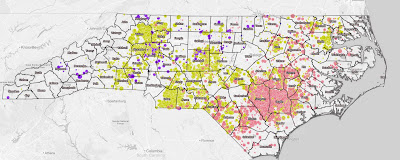Americans throughout the country — especially those in rural counties — have growing concerns that they will have limited choices when selecting an individual health plan when open enrollment on the Obamacare exchanges begins Nov, 1, Deborah Dorman-Rodriguez and David Kaufman report for the Legal Solutions Blog. Concerns heightened after Aetna announced "that it will exit the Affordable Care Act marketplaces, commonly known as the 'exchanges,' in 11 states for the benefit year beginning in 2017."
As many as 19 percent of all exchange or "marketplace" enrollees across the United States could have only one insurer to choose from going into 2017, according to an analysis by the Kaiser Family Foundation. "In rural counties, the numbers increase: 41 percent of all marketplace enrollees will have only one carrier to choose from for marketplace policies in 2017, compared with 7 percent in 2016," writes Dorman-Rodrigues and Kaufman.
Wyoming was the only state in 2016 to have only one marketplace insurer. Next year, five states — Alabama, Alaska, Oklahoma, South Carolina and Wyoming — are likely to have only one marketplace insurer available in all counties, Dorman-Rodrigues and Kaufman report.
"Insurers have been vocal regarding ACA marketplace-related losses, and carriers losing money have either actively sought premium increases for 2017 plans or withdrawn from markets entirely where they have determined losses are unsustainable," the reporters write. "Losses are attributed to several factors. These include the complex interaction between the sicker, higher-risk population covered by marketplace plans; the relative lack of healthy individuals in the marketplace risk pools; and the failure of the market stabilization programs to adequately address the overall goal of providing certainty to insurers, protecting against adverse selection and stabilizing premiums in the individual market. This analysis explores the possible regulatory implications of insurers’ exits from the rural marketplace and the potential regulatory responses to the issue."
As many as 19 percent of all exchange or "marketplace" enrollees across the United States could have only one insurer to choose from going into 2017, according to an analysis by the Kaiser Family Foundation. "In rural counties, the numbers increase: 41 percent of all marketplace enrollees will have only one carrier to choose from for marketplace policies in 2017, compared with 7 percent in 2016," writes Dorman-Rodrigues and Kaufman.
Wyoming was the only state in 2016 to have only one marketplace insurer. Next year, five states — Alabama, Alaska, Oklahoma, South Carolina and Wyoming — are likely to have only one marketplace insurer available in all counties, Dorman-Rodrigues and Kaufman report.
"Insurers have been vocal regarding ACA marketplace-related losses, and carriers losing money have either actively sought premium increases for 2017 plans or withdrawn from markets entirely where they have determined losses are unsustainable," the reporters write. "Losses are attributed to several factors. These include the complex interaction between the sicker, higher-risk population covered by marketplace plans; the relative lack of healthy individuals in the marketplace risk pools; and the failure of the market stabilization programs to adequately address the overall goal of providing certainty to insurers, protecting against adverse selection and stabilizing premiums in the individual market. This analysis explores the possible regulatory implications of insurers’ exits from the rural marketplace and the potential regulatory responses to the issue."






















